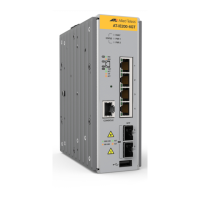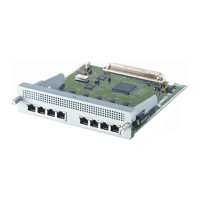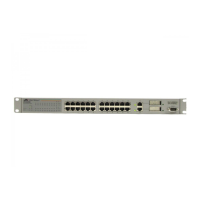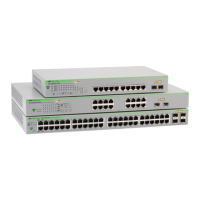C613-50631-01 Rev A Command Reference for IE340 Series 1690
AlliedWare Plus™ Operating System - Version 5.5.3-0.x
IGMP AND IGMP SNOOPING COMMANDS
IP
IGMP STATIC-GROUP
ip igmp static-group
Overview Use this command to statically configure multicast group membership entries on
a VLAN interface, or to statically forward a multicast channel out a particular port
or port range.
To statically add only a group membership, do not specify any parameters.
To statically add a (*,g) entry to forward a channel out of a port, specify only the
multicast group address and the switch port range.
To statically add an (s,g) entry to forward a channel out of a port, specify the
multicast group address, the source IP address, and the switch port range.
To use Source Specific Multicast mapping to determine the source IP address of
the multicast server use the ssm-map parameter instead of specifying the source
IP address.
Use the no variant of this command to delete static group membership entries.
Syntax
ip igmp static-group <ip-address> [source
{<ip-source-addr>|ssm-map}] [interface <port>]
no ip igmp static-group <ip-address> [source
{<ip-source-addr>|ssm-map}] [interface <port>]
Mode Interface Configuration for a VLAN interface.
Usage notes This command applies to IGMP operation, or to IGMP Snooping on a VLAN
interface.
Parameter Description
<ip-address> Standard IP Multicast group address, entered in the form
A.B.C.D, to be configured as a static group member.
source Optional.
<ip-source-addr> Standard IP source address, entered in the form A.B.C.D, to be
configured as a static source from where multicast packets
originate.
ssm-map This parameter uses Source Specific Multicast (SSM) Mapping
to determine the source IP address associated with the
specified IP Multicast group address. SSM mappings are
configured using the ip igmp ssm-map static command.
interface Use this parameter to specify a specific switch port or switch
port range to statically forward the multicast group out of. If
not used, static configuration is applied on all ports in the
VLAN.
<port> The port or port range to statically forward the group out of.
The port may be a switch port (e.g. port1.0.4), a static
channel group (e.g. sa2), or a dynamic (LACP) channel group
(e.g. po2).

